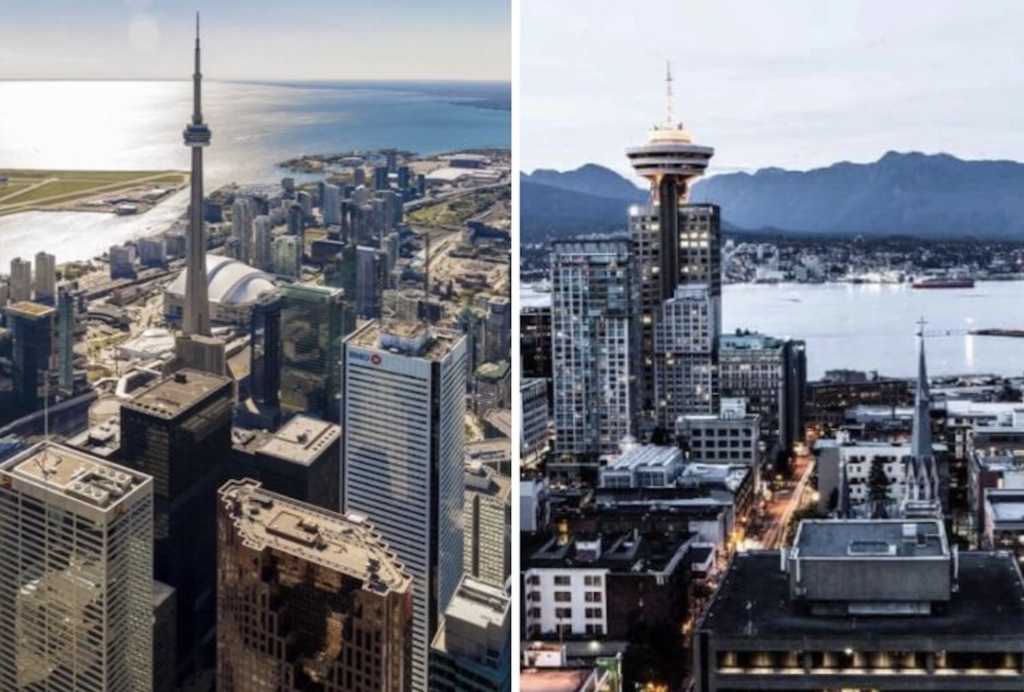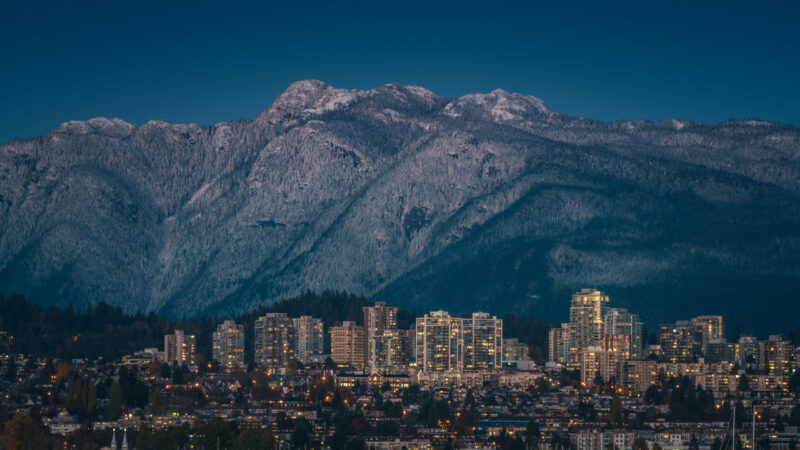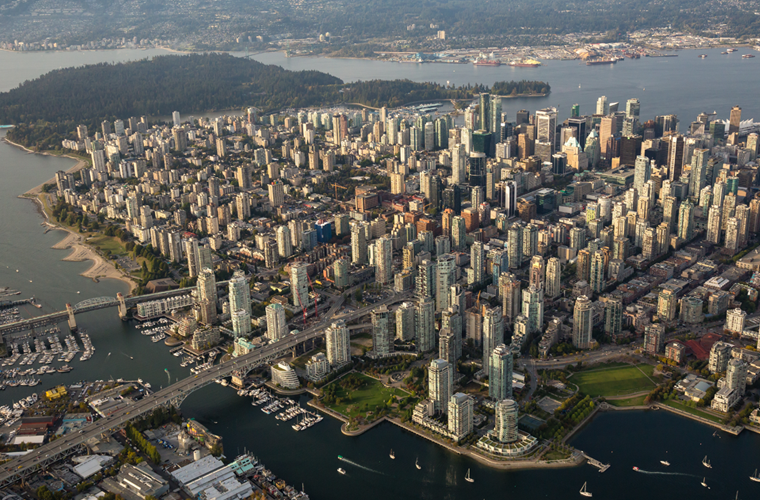Selling A Familiar Rivalry: Toronto Vs. Vancouver

Yet another duel between the 6 and the 604. While the broader Canadian public may roll its eyes upon hearing Toronto and Vancouver mentioned in the context of any comparison, the residents of these two cities love to compare the advantages and disadvantages of their chosen homes. However, since the present subject is real estate, a thorough comparison should examine the relative successes and struggles of neighbourhoods, as RBC says Toronto and Vancouver face the deepest decline in 50 years. The past few months have been a rollercoaster and it looks like our hands and legs will remain firmly inside the vehicle for the foreseeable.
Some Vancouver Neighbourhoods Staying Strong Amid Crisis
The market in July 2022 reflected that of one with a continuing downward trend. Despite the downward trend across the board, sales of condos and townhomes seemed more robust than detached homes. However, concessions are usually made in trying times as condos and townhomes have a 2:1 ratio to detached homes on the market. Additionally, the majority of condos and townhomes are priced below the majority of detached homes which in a time of unpredictable economic stressors can be more appealing simply by being less costly.
Detached Homes: In all Vancouver neighbourhoods, the combined sales ratio for total sales of detached homes was 9%. Sales generally remained low, with some neighbourhoods posting 0 sales despite growing inventories. However, some neighbourhoods still resulted in decent enough detached home sales ratios:
- Strathcona: 33%
- Fraser: 24%
- Hastings Sunrise: 19%
- Knight: 17%
- Fraserview: 15%
- South Cambie: 14%
- Main: 14%
- Dunbar: 13%
- Renfrew: 13%
Neighbourhoods with more of a working-class or family-friendly reputation performed better in the last month. One such neighbourhood is Hastings Sunrise, a diverse, multicultural community with a village-like feel located next to Hastings Park which hosts an amusement park and racing track. While it is unclear which unique selling points prompted sales to shift to these areas, it could likely be yet another reflection of the current economic situation affecting property markets: a renewed interest in more broadly-attainable properties rather than larger, more expensive properties.
Condos & Townhomes: In July, there was a 21% combined sales ratio for total sales of condos & townhomes across Vancouver’s neighbourhoods. Many of these high-performing neighbourhoods are popular with younger people. There are also multi-unit residential developments adding more condo and townhome units to the local housing market. This supply of attached housing could be an explanation for their performance in July as inflation, interest rate hikes and stress tests on variable rate mortgages made it hard enough for first-time homebuyers to enter the market – never mind for a detached home. For example, the Mount Pleasant VE neighbourhood is a residential area known for international cuisine and its relatively young population. Similarly, the Fairview neighbourhood is a highly sought-after, densified neighbourhood with a sizeable inventory of condo units on the market in close proximity to Downtown Vancouver and attractive community amenities.
- Southlands: 67%
- Hastings: 50%
- Main: 50%
- Fairview: 43%
- Mount Pleasant: 43%
- SW Marine: 38%
- False Creek: 33%
- Knight: 33%
- Downtown: 22%
- South Marine: 22%
Attached Homes Stay the Course in Toronto
While many attention-grabbing headlines and much keyboard usage has been dedicated to the drop in sales and prices over the past few months, Toronto’s property market has seen varied effects. Much akin to other property markets, home sales have declined significantly compared to a year ago, with the TRREB reporting 9,339 sales in June 2022 – and 4,912 sales in July 2022. However, the average price of homes of all property types has stayed relatively consistent in Toronto, with year-over-year (yr/yr) gains remaining quite high. On average – and according to the Toronto Regional Real Estate Board’s July 2022 report – benchmark prices for Townhouses and Apartments have remained at significant year-over-year changes. Townhouses experienced a 19.42% yr/yr change, and Apartments experienced a 20.20% yr/yr change. There’s been less of a yr/yr change on detached single family homes at 8.95%.
It also depends on where people live too. As with Vancouver, not all neighbourhoods have equal interest, inventory or unique selling points. According to Zolo Realty, the hottest neighbourhoods in Toronto right now are currently:
- Danforth.
- Beechborough-Greenbrook.
- Lawrence Park North.
- Centennial Scarborough.
- Wychwood.
And as of August 2022, the coldest neighbourhoods in Toronto for home sales are:
- Black Creek
- York University Heights
- Mount Olive-Silverstone-Jamestown
- Henry Farm
- Newtonbrook West
Misery Loves Company
While Toronto’s and Vancouver’s real estate markets remain reluctantly intertwined vying for the #1 spot of largest sales decline, biggest price drop or most-unaffordable housing it also means the two cities will come out of the crisis together – potentially stronger than ever. At the very least, higher powers of economics are more certain that the real estate market can avoid a crash altogether.
Elsewhere is Always Somewhere to Someone Else
Of course, living in the hyper-competitive areas of Canada’s real estate market is not a by-default situation. It is possible to seek out a more amenable option. Perhaps even an option you didn’t give some serious thought to before. An option like Edmonton, Alberta. With a population just over 1 million, Canada’s Festival City is where it’s not only cheaper to rent a one-bedroom apartment at $1054 ($2500 in Vancouver), but it’s also a comparatively-shorter wait to purchase a home going from 400+ months of saving in Vancouver to only 30 months in Edmonton. In this market, it might be worth considering.



